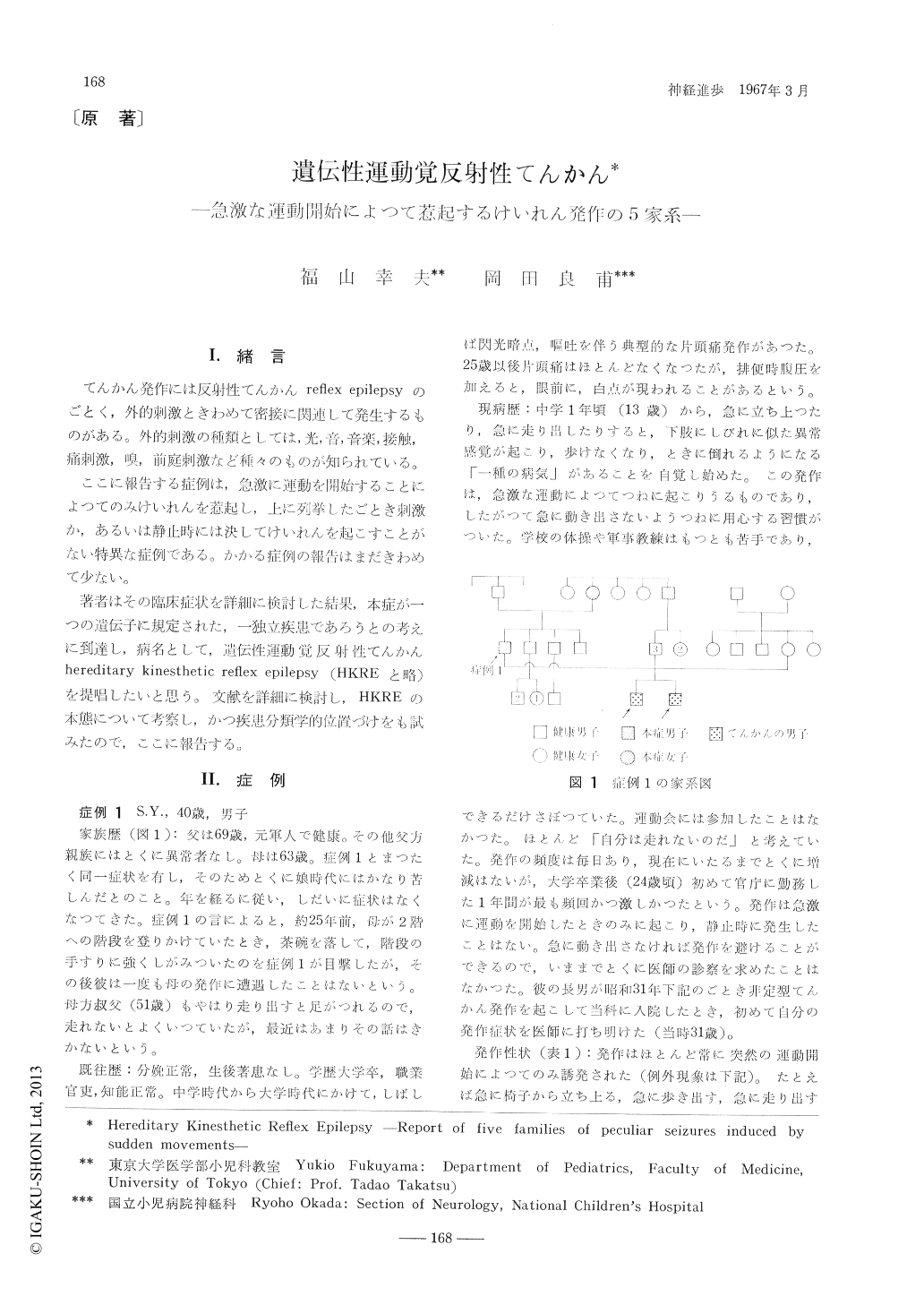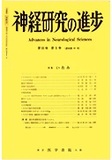Japanese
English
- 有料閲覧
- Abstract 文献概要
- 1ページ目 Look Inside
I.緒言
てんかん発作には反射性てんかんreflex epilepsyのごとく,外的刺激ときわめて密接に関連して発生するものがある。外的刺激の種類としては,光,音,音楽,接触,痛刺激,嗅,前庭刺激など種々のものが知られている。
ここに報告する症例は,急激に運動を開始することによつてのみけいれんを惹起し,上に列挙したごとき刺激か,あるいは静止時には決してけいれんを起こすことがない特異な症例である。かかる症例の報告はまだきわめて少ない。
Five families of propositi, suffering from peculiar hemiconvulsions provoked only by the sudden initiation of movements, were reported.
The age of onset, clinical symptoms and courses of seven cases, all of whom were personally observed by the author, are characteristic and uniform. It was believed that the condition here described should be qualified to be recognized as a unique type of epilepsies and a disease entity. In literatures, there were 28 families including sixty-six patients suffering from signs and symptoms exactly same with those of the present cases.
The nature of attacks was considered to be a sort of reflex epileptic seizures characterized by a particular response to a kinesthetic stimulation which may be originated in and conveyed reflexly from joints and muscles of the limbs. In these cases, the higher center 01 neural circuits of proprioceptive reflex, the thalamus, may be hyperactive or easily irritable, and this morbid constitation is probably determined by a dominant hereditary gene.
In three of our five families, dominant mode of heredity with incomplete penetrance could be postulated for the disease, because subjects from two generations were similarly affected. In addition, all five families have had severalmembers of idiopathic epileptic patients. More-over marked migraine were noticed in the history of case 1 and case 4. Anticonvulsant drugs such as phenobarbital or diphenylhydantoin were very effective in the treatment of patients of our own as well as of those in the literatures. Electroencephalographic abnormalities were reported in the majority of cases in literatures, while in our ptients EEGs were always within normal range.
All these facts support the hypothesis that the disease here described falls under the category of epilepsy.
In considering the pathogenesis of the disease, a very important and suggestive is the fact that the case 3 of our series had complicated by anepisode of violent involuntary movements of choreatic and myoclonic type with no apparent causes in the course of the disease. The episode subsided gradually and almost spontaneously within about 20 days. A transitory functional derangement of basal ganglia was suspected as the cause of the episode of involuntary movements in this case. The observation that the disease was associated with episode of involuntary movements in the case 3 will strongly support the author's opinion that the disease here reported may be a sort of kinesthetic reflex epilepsy and is probably due to hereditary functional disorder of thalamus which is regarded as a central pool of kinesthetic reflex arcs.

Copyright © 1967, Igaku-Shoin Ltd. All rights reserved.


